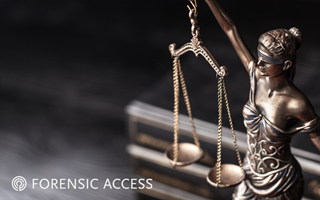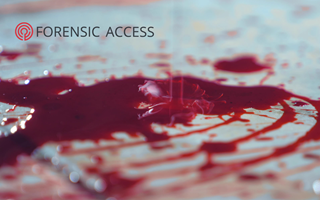News March 03, 2022
Forensic Access’ webinar series for 2022 kicks off with Dr Sarah Jacob presenting “Footwear Mark Evidence: How we use trace evidence to help your case” and we have created a Footwear Mark Evidence 101 to get you up to speed with this crucial area of forensic chemistry.
What is it?
Footwear Mark Evidence is the comparison of physical characteristics between footwear items (i.e., a shoe) and marks recovered from a crime scene such as burglary.
It is one of the few evidence types that can provide a conclusive link. During the analysis a shoe is compared against a footwear mark in terms of pattern, pattern arrangement and wear and fine detail, including characteristic damage.
How are crime scene marks recovered?
One of the first things that police need to do to do when dealing with a crime scene is to recover any footwear marks that are present and submit them to the laboratory.
There are several ways of doing this. Here at Forensic Access, we always ask that the original item is submitted if possible – it could be a piece of paper from the floor, something slightly larger like a wing mirror from a car if it’s been kicked in a criminal damage case, or even a chair. For items larger than that, the police need to recover the footwear marks from the scene for submission to the laboratory.
Footwear marks can be recovered from the scene via lifting. Gelatin lifting uses a lift made of gelatin on a plastic backing which is then placed over the mark to lift it. Gelatin lifts are typically effective at lifting dirty marks. Electrostatic lifting is often an effective method of recovering dusty marks. Electrostatic lifts involve placing a film over a given mark which is then subjected to an electric charge. Marks can also be recorded using photography, whilst 3D marks, such as marks in mud, can be recovered via casting.
Police protocol may dictate that the Crime Scene Examiner (CSE) should utilise several of the methods outlined above in a specific sequence. This could involve photography first, for example, followed by gelatin lifting. This would ensure that there is a permanent record of the mark prior to lifting, because there may be features visible in the photograph which are not clear in the lifted mark.
How is a footwear mark examination carried out at Forensic Access?
Typically, this is a six-stage process that involves the following steps:
- Enhancement of scene marks
The first thing we do at the laboratory is enhance the scene marks that are submitted to us and put them in a format that is suitable for comparison, for example using photography or gel lifting. We prefer marks to be submitted as original items as it gives us scope to use these techniques at the laboratory under ideal conditions to garner the best results.
- Examination of footwear items – test prints
We will then examine the footwear items and create test prints. Test prints are a representation of the sole of the footwear and the mark that the sole would leave as it makes contact with a surface.
- Comparison – overlay
We would then overlay our test marks onto the crime scene marks to conduct our comparison. This involves comparing the prints and the marks by eye, noting any similarities or points of difference.
- Interpretation
We interpret our results by considering any points of similarity or points of difference noted in step three to come to our conclusion.
- Independent quality assurance check
The findings are subject to an independent quality assurance check by a second competent scientist.
- Report and file review
Findings are then compiled into a report. This is again subject to an independent quality check by a second competent scientist to ensure accuracy and clarity.
Defence examinations of footwear mark cases
As well as reviewing the work which has already been carried out, our team can conduct initial examinations on items which have not yet been examined. This could include:
- The comparison of footwear impressions from scenes with items of footwear
- The examination and comparison of footwear marks on bodies and clothing
- Enhancement and recovery of footwear marks at scenes
- Podiatry: “foot in shoe” examinations to establish the habitual wearer of items of footwear
Our team can also carry out further examination of items that were previously examined by other scientists for the prosecution. This could consider factors such as:
- How does any new information provided by the defence impact the conclusion reached?
- Has the comparison, including production of test marks and scene mark enhancement, been carried out to a level to ensure a robust conclusion?
- Are the interpretations and conclusions reached scientifically correct?
- Has the commonality of the sole pattern and size been considered as part of the interpretation?
- Is the report consistent with what is written in the case notes?
- Has any time delay in the seizure of the footwear items been taken into account during the comparison?
- Has footwear from any additional suspects been considered as part of the examination?
- Location of crime scene marks – does this have any bearing on the case?
It’s important to note that not all casework requires re-examination, however, our experts will be able to provide advice on the appropriate course of action using available case information to consider and investigate all issues. We are also able to help you ensure, from a defence perspective, that a comprehensive independent evaluation has been completed and you have received the impartial advice required.
Forensic Chemistry Expertise
Forensic Access boasts a world-class team of forensic scientists operating in bespoke facilities across a multitude of forensic disciplines. All forensic work is carried out to the highest quality standards.
If you need assistance with your defence strategy, please get in contact with our casework team today by calling 01235 774870 or fill-in our online contact form.


